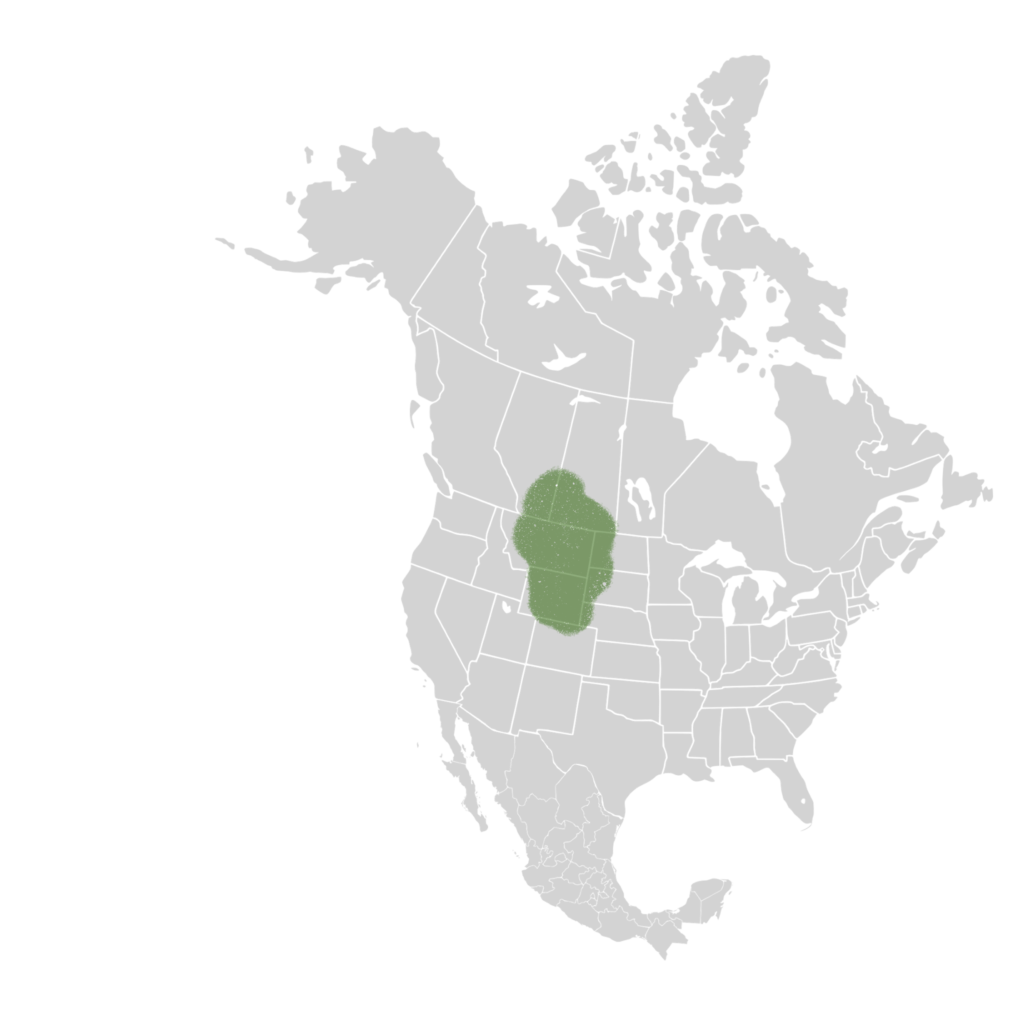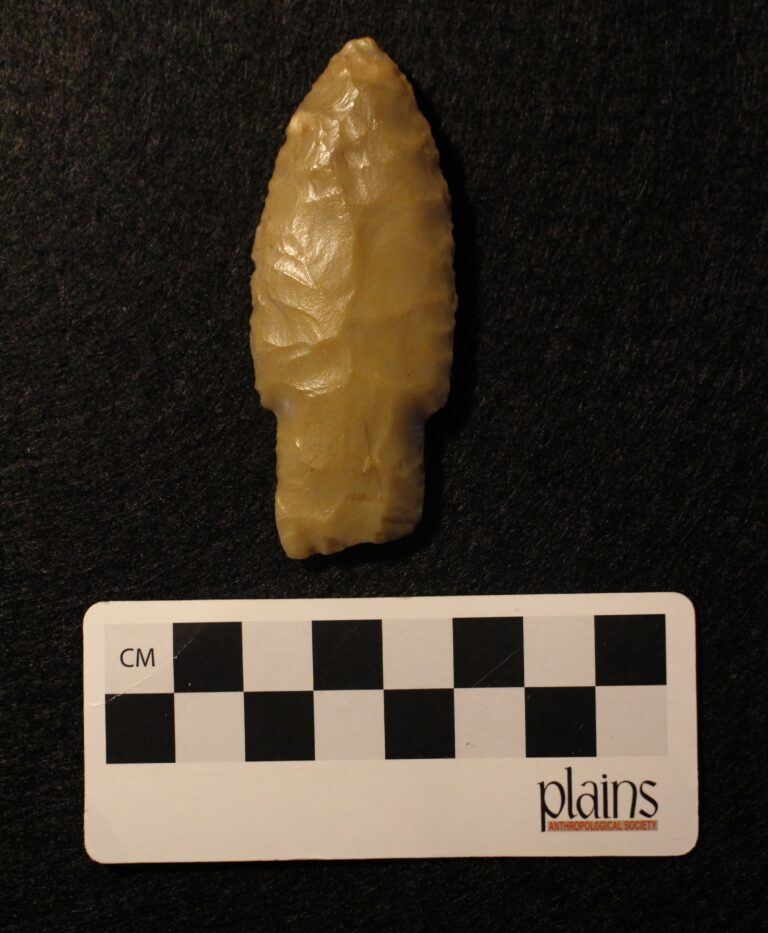Alberta
9,500 - 7,600 Bp ; [Paleo]
Alberta points belong to a family of points called the Cody Complex, a group of points that share morphologic similarities and exist at roughly the same time. Within that complex, Alberta considered to be the earliest point type and shows the most variation from the others. The Alberta point introduces a new shape, with abrupt and pronounced shoulders. The point is robust, and the stems have signs of grinding.
An example of Alberta points transitioning into the later points of the Cody complex is at the Horner site in Wyoming. The site has lithics consisting of a transitional Alberta style which has been named to Alberta-Cody.²
Typology
- Form
- Base
- Horizontal Cross Section
- Vertical Cross Section
- Reduction
- Stem Grinding
- Basal Grinding
- Shouldered
- Straight, rounded, concave
- Lenticular
- Uniform, irregular
- Percussion and / or pressure retouch
- Yes
- Yes
distribution map (Great Plains)

Notable Sites
- Horner, Wyoming – This site has a possible transitional Alberta-Cody point style. Discussed above.
- Hudson Meng, Nebraska – An Alberta bison kill and processing site.
- Fletcher, Alberta Canada – This site may be one of the last in the archaeological record to have Alberta points. Alberta points show up here, mixed with Scottsbluff. This is one of the earliest sites to have Scottsbluff points.²
References cited
Typology:
Taylor, Jeb. Projectile Points of the High Plains: New Perspectives on Typology Based on Examinations of Original Type Site Specimens. 1st ed. Buffalo, Wyo.: Jeb Taylor Artifacts, 2006.
¹Kornfeld, Marcel, George C. Frison, Mary Lou Larson, Bruce A. Bradley, and George C. Frison. Prehistoric Hunter-Gatherers of the High Plains and Rockies. 3rd ed. Walnut Creek, Calif: Left Coast Press, 2010.
²Knell, Edward J. and Mark P. Muñiz (2013) Introducing The Cody Complex. In Paleoindian Lifeways of the Cody Complex, edited by Edward J. Knell and Mark P. Muniz, pp. 3-22. University of Utah Press, Salt Lake City.


